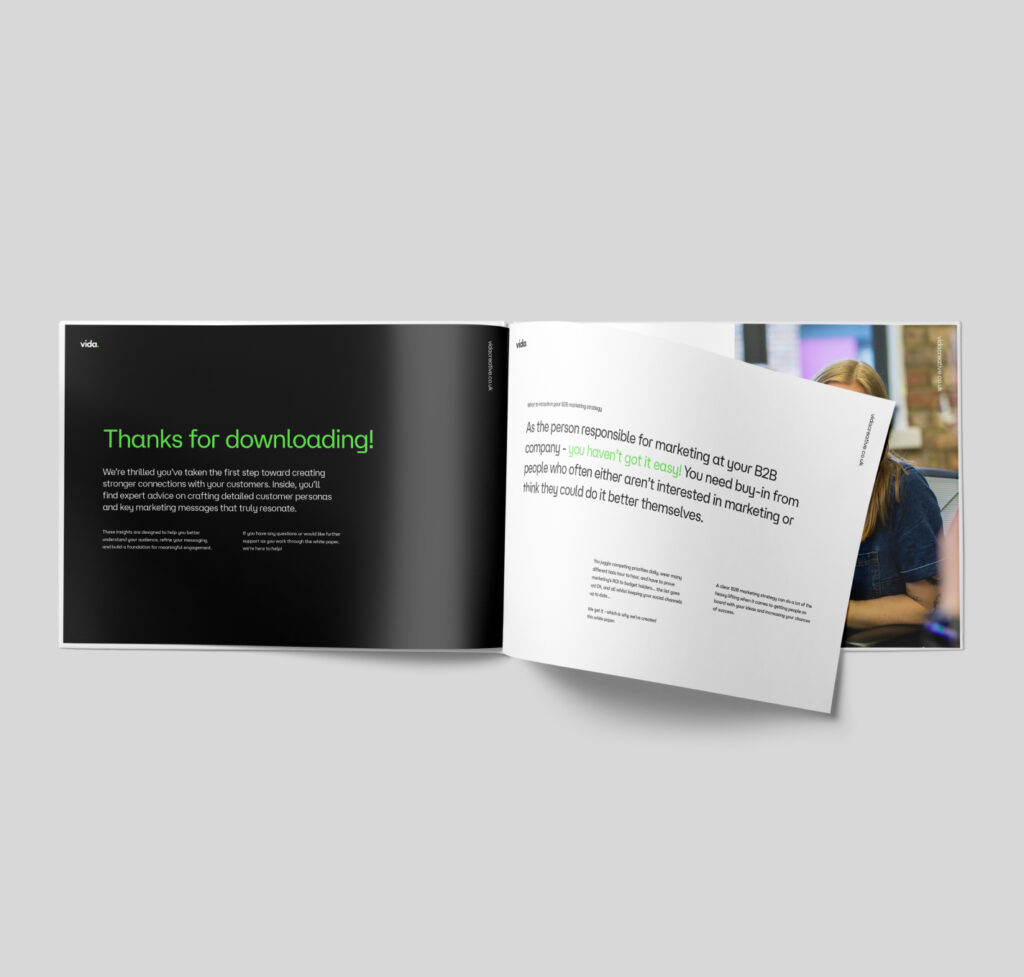Are you adapting the content that goes out across each of your business's social media channels? If not, here's why and how you should be doing it…
When it comes to social media it’s easy to post the same message across every platform. But we’ve got a secret to tell you – that’s not the best way to build lasting relationships with your audiences.
Adapting your social media posts to suit different platforms will encourage more engagement with your brand, and ultimately create the best outcomes for your business.
It’s not totally straightforward though. All social platforms have different algorithms, so as you’ll already know, things like ideal caption length, image formatting and wording vary. Your audiences and the way each platform decides who sees your content is different too.
To help you wrap your head around it, here’s a breakdown of how some of the more popular social channels differ. And to demo what that means in practice, we’re showing you how one of our fave brands, Innocent, does it.
Facebook has become a bit of a search engine as well as a social platform, so if you know your customers are there, you should be too.
You can’t get the most out of Facebook without pleasing the algorithms though, and unfortunately for us marketers there are always changes to keep up with!
For Innocent, their Facebook is home to lots of hilarious, varied content, mainly sales-orientated, incorporating videos or images. This is clearly what works for them as it gets great engagement, but doesn’t mean this would necessarily work for everyone…
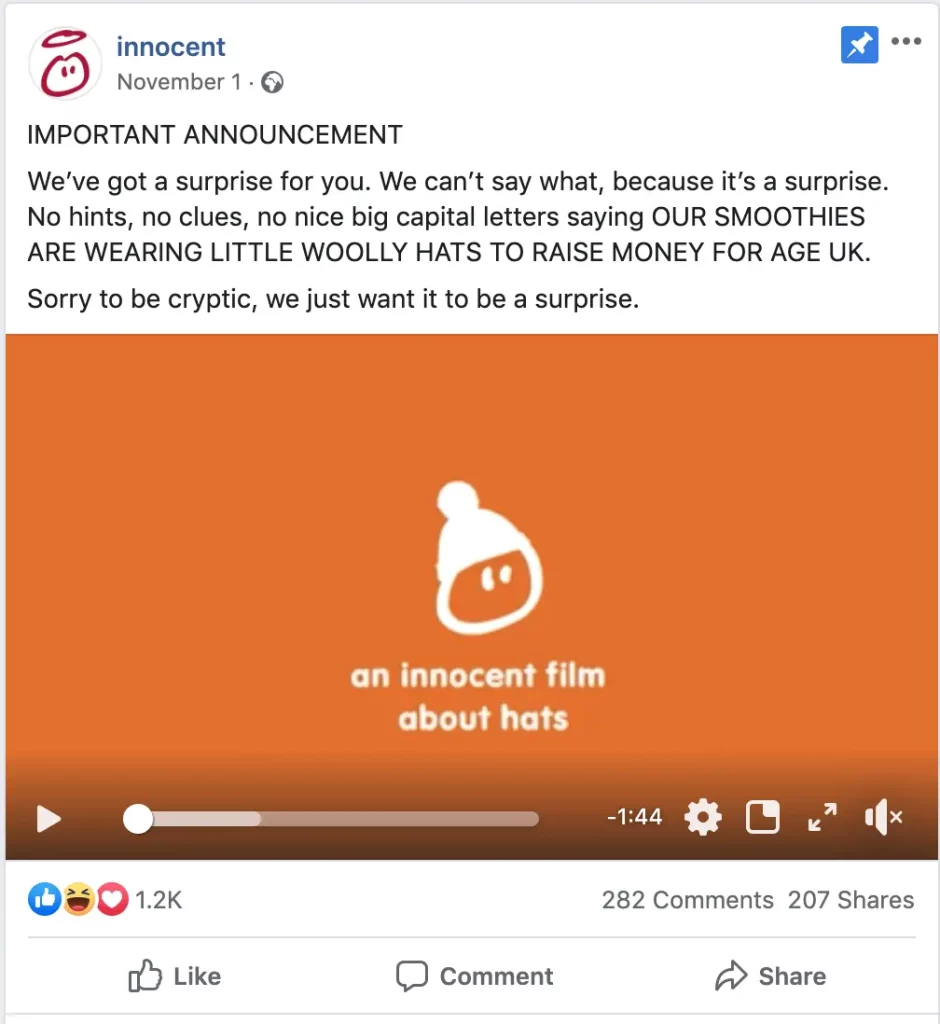
Essentially the Facebook algorithm aims to drive ‘authentic interactions’ by ordering the content you see depending on what they think is most interesting or relevant to you. It means that when it comes to marketing, brands are expected to promote quality content that encourages ‘real’ interactions and shares.
So Facebook won’t show users content they don’t think they want to see, for free anyway! Paid Facebook ads are a whole other kettle of fish to address another time…
So, what should you do?
- Share posts when your audience is most active – Facebook has its own analytics that can give you this info
- Video content drives higher engagement and interaction (as noted by Facebook themselves) so give it a go
- Facebook claim that ‘active signals’ – aka comments, replies, likes and shares – drive the ‘meaningful interactions’ they want to create. But apparently if you specifically tell people how to interact with your posts, Facebook can pick up on this and serve it as spam, which definitely isn’t what you want! So just be careful with how you phrase things.
LinkedIn has a more specific audience than Facebook – it’s great for targeting ‘professionals’.
You need a personal account to have a company page, so if you haven’t already got one, get one set up pronto.
To start growing your LinkedIn page it helps to grow your personal following first. Then use that platform to spread the word about your company page by sharing the content you publish as a business on your personal account.
Oh, and LinkedIn also supports hashtags. Use 3 or 4 relevant hashtags at the end of each of your posts to grow your reach and help people you’ve not connected with before to find your content.
Innocent is a good example of how content should vary from platform to platform. Their LinkedIn mainly contains job vacancies and opportunities for obvious reasons. Although they do mix up how they do it – sometimes they share listings or links to their website, but occasionally they’ll post a funny sales-based video, or an image.
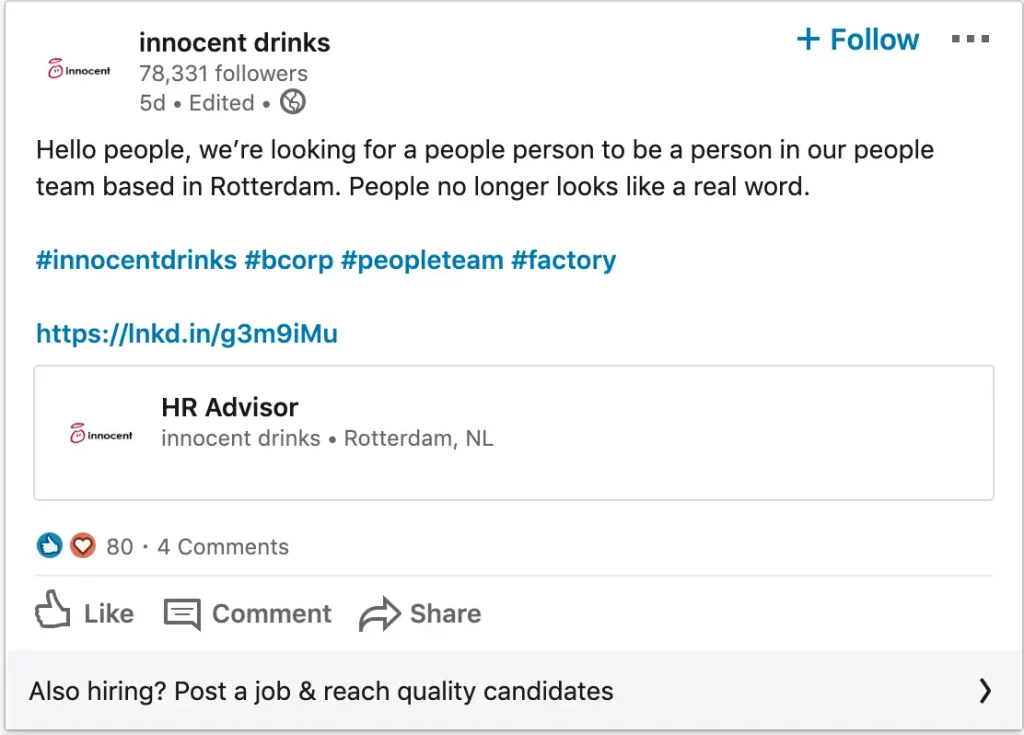
Twitter is a whole different ballgame to Facebook and LinkedIn. Pretty much as soon as you’ve shared a tweet it disappears into the twittersphere, so it’s normal to post more than you would on other social platforms.
Innocent’s Twitter account is heavily focused on interacting with other users, ‘quoting’ their content to make a joke or flatter them. Their original content tends to be short but funny tweets that drive engagement – they also post a lot more on Twitter than their other channels.
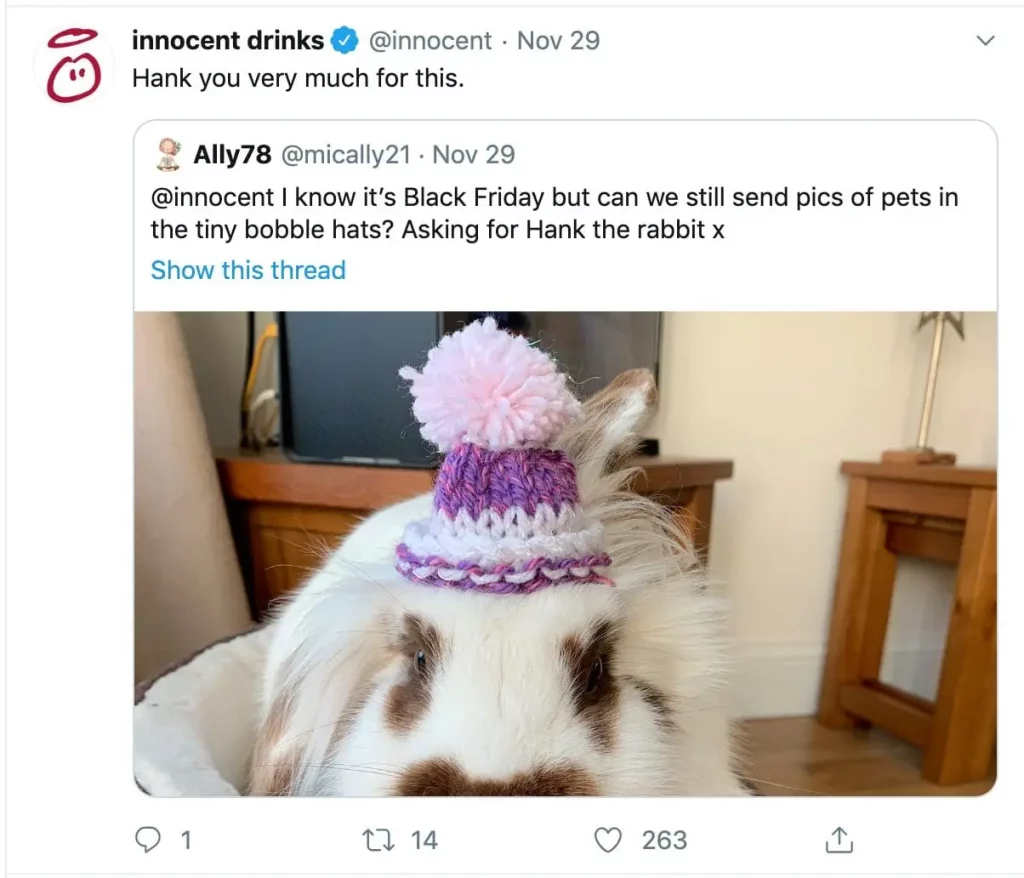
Much like Facebook, Twitter’s algorithm prioritises posts it thinks people want to see in the ‘Top Tweets’ section.
Twitter says your ‘Top Tweets’ are “based on accounts you interact with most, tweets you engage with and much more.”
“Much more”? What does that mean? Well, it’s not entirely clear, but ranking signals consider how recently the tweet was published, how much engagement it’s getting, the type of media the tweet contains (and what type of media the user usually engages with) and also factors from the user’s account such as location, followers, and how long they’ve been away from Twitter. Not many factors then!
In terms of increasing website traffic, Instagram isn’t the best platform as you can’t share clickable links in your posts.
Things have changed quite a bit recently though, because Shopify integration now means that retailers can sell their products directly through the platform.
This obviously means that if you’re a retailer, your content is going to be displayed differently on Insta to the way it’s displayed on other social channels.
In the B2B world though, we have to stick with Instagram providing a platform where we can create a feel for our brand rather than necessarily selling directly on Instagram.
As with every social platform, it might not be quite right for your business. If your audience isn’t on Instagram then it’s a bit of a waste of effort trying to sell your wares to no one that’s interested. For example, Instagram’s users are largely under 30, so if they’re not in your target demographic, consider starting to grow your presence on other platforms first.
Innocent’s Instagram is a fairly equal mixture of on-brand graphics and photographs to keep things visually appealing, but still varied and interesting.
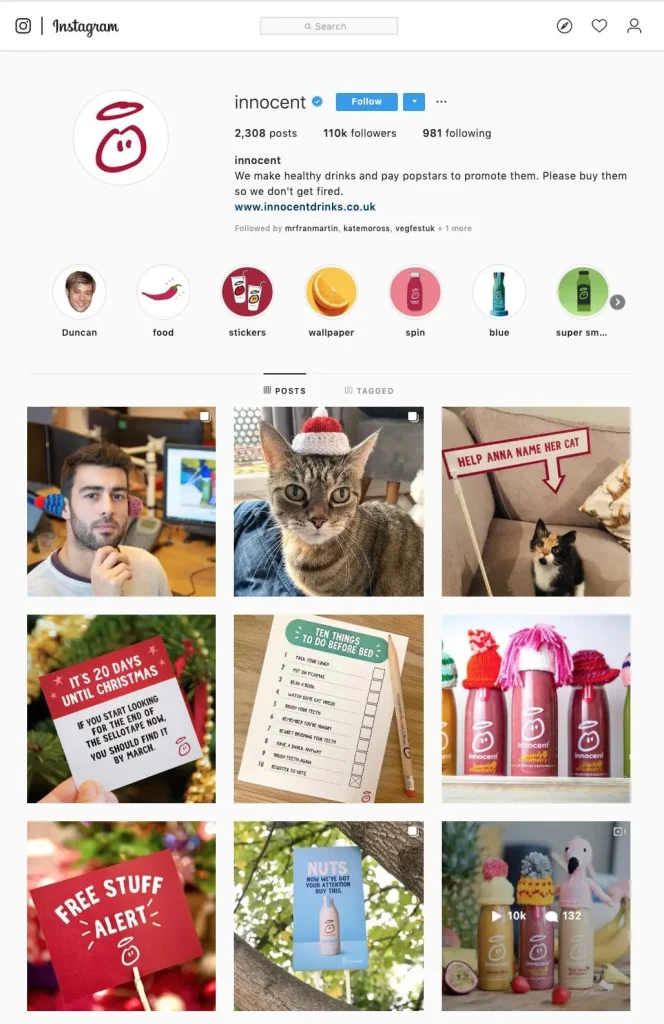
But, they keep the same teasing tone across all platforms to create a solid brand that people recognise. We recommend you check it out!
Want some advice?
If you’re looking to create and implement a social media marketing strategy that works, let’s have a chat to see how we can help.
